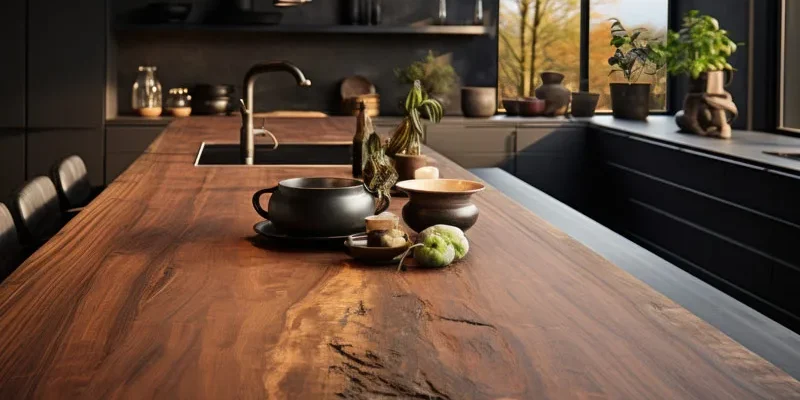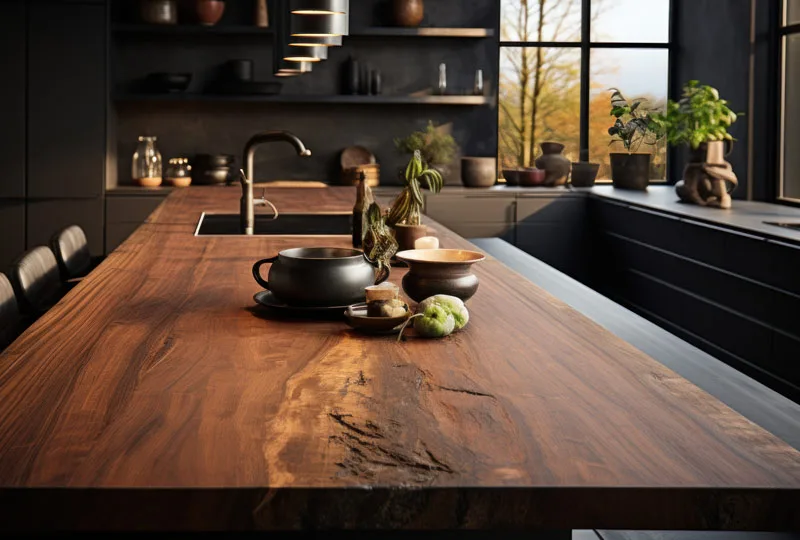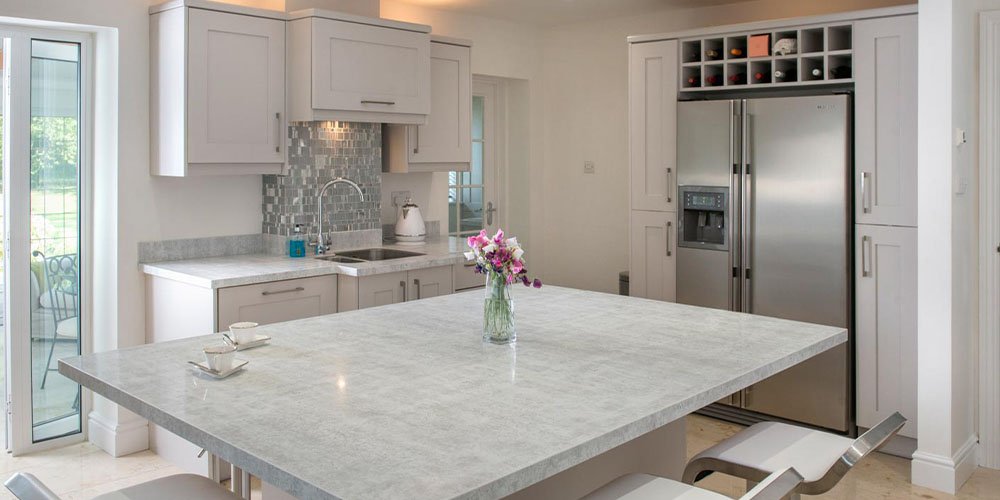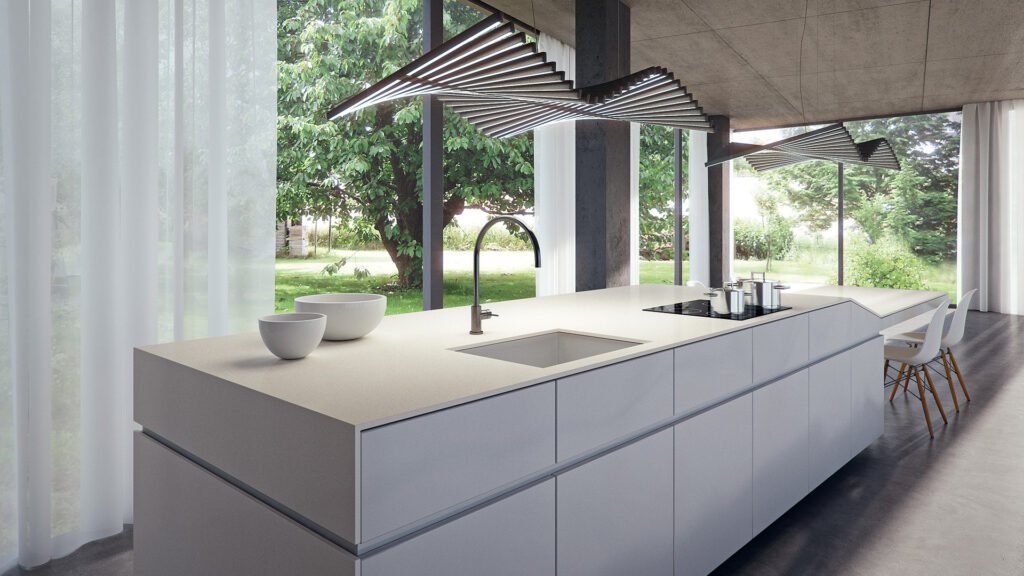


When designing or renovating a kitchen in Ontario, one of the most impactful choices homeowners face is selecting the right countertop material. Beyond simply being a work surface, countertops define the character of the kitchen, influence the home’s overall value, and play a huge role in everyday functionality. Among the many options available in 2025, two stand out for their unique appeal: concrete countertops and wood countertops.
Both materials bring very different aesthetics to Ontario kitchens. Concrete delivers a modern, industrial look that feels sleek, bold, and highly customizable. Wood, on the other hand, adds natural warmth, character, and a timeless charm that appeals to homeowners who prefer a cozy, organic environment. Deciding between the two is not always easy, especially since Ontario’s housing market is so diverse—from minimalist Toronto condos to rustic family homes in Northern Ontario.
In this article, we’ll explore the key differences between concrete vs wood countertops for Ontario kitchens. We’ll look at design trends, durability, cost, and practical maintenance, giving homeowners a clear roadmap to choose the right option. Whether you’re after a trendy, modern upgrade or a traditional, warm feel, understanding these two materials will help you make an informed decision.
Kitchen renovations are among the top investments Ontario homeowners make, often returning a high ROI when selling. Countertops, in particular, are one of the first things buyers notice. In a competitive housing market like Toronto, Mississauga, and North York, stylish countertops can significantly boost property appeal.
Visual Impact: Countertops take up a large portion of the kitchen’s visible space, influencing its mood and design.
Daily Functionality: From meal prep to social gatherings, this is the surface everyone interacts with most.
Long-Term Value: Durable, stylish countertops help increase a home’s resale value—something many Ontario homeowners consider.
That’s why choosing between concrete and wood is more than just a style preference—it’s about lifestyle, maintenance, and investment.

Ontario kitchens are seeing a shift toward bold personalization. Homeowners no longer want cookie-cutter granite or laminate; instead, they’re looking for countertops that reflect their personality and the home’s character.
Concrete countertops are on the rise in modern and luxury homes across Toronto and Vaughan. Their raw, industrial style matches perfectly with minimalist cabinetry, matte finishes, and contemporary lighting.
Wood countertops remain popular in regions like Oakville, Burlington, and cottage-country homes. They bring warmth and texture to farmhouse kitchens, transitional designs, and even mixed-material kitchens where wood contrasts with stone islands.
This dual trend shows that both materials have carved out strong demand in Ontario. The key is matching the countertop with the home’s overall design style and how the kitchen will be used day-to-day.
Before diving into the detailed pros and cons of each material, here are the first questions Ontario homeowners should ask:
Design Preference: Do you want a modern, industrial vibe (concrete) or a warm, natural atmosphere (wood)?
Maintenance Commitment: Are you ready for regular oiling (wood) or sealing against stains (concrete)?
Budget Range: Concrete is often custom-made, while wood can be more budget-flexible depending on the species.
Lifestyle Needs: Do you cook frequently, host dinner parties, or just want a stylish upgrade?
These initial considerations will help set the tone before choosing one material over the other.
Concrete countertops have become a statement piece in modern Ontario kitchens, especially in urban areas like Toronto, Vaughan, and Mississauga. Once associated only with industrial or commercial spaces, concrete has evolved into a highly customizable, stylish, and durable choice for homeowners who want something different from traditional granite or quartz. While not the right fit for everyone, concrete countertops offer a unique blend of aesthetics and performance when designed and installed properly.

Unlike pre-fabricated options, concrete countertops are usually custom-built. This means each slab is hand-poured, molded, and finished to fit the specific kitchen layout. As a result, no two countertops are exactly alike—perfect for Ontario homeowners who want a one-of-a-kind feature in their kitchen.
Customizable Color & Finish: Concrete can be tinted in virtually any shade, from light greys to bold blacks, and even warm tones that mimic natural stone.
Shape Flexibility: Because it’s poured into molds, concrete allows for unique shapes, integrated sinks, and even decorative inlays (like stones, glass, or shells).
Texture Options: The surface can be polished to a smooth, glossy finish or left matte for a more rustic, natural look.
This high level of customization sets concrete apart from wood and most other countertop materials.
Concrete instantly gives a kitchen a bold, architectural feel. For contemporary Ontario homes, especially condos and lofts in Toronto, this style is a perfect match. Paired with minimalist cabinetry, matte hardware, and pendant lighting, concrete countertops elevate the entire space.
When properly sealed, concrete is extremely strong and long-lasting. It can handle the wear and tear of daily cooking, heavy pots, and even the occasional spill without major issues.
Concrete performs well against heat, so placing hot pans briefly on the surface isn’t usually a problem (though trivets are still recommended to prevent thermal shock).
Unlike wood or natural stone, concrete can be shaped exactly to fit unique kitchen layouts, making it ideal for open-concept kitchens or spaces that need a custom island.
Many Ontario fabricators specialize in custom concrete work, which supports local businesses and allows homeowners to be closely involved in the design process.

Concrete is naturally porous, meaning it can absorb liquids if not sealed properly. In a busy Ontario household with kids, coffee, wine, or juice spills can quickly become permanent stains without proper care.
Unlike quartz or granite, concrete requires regular sealing to maintain its durability and prevent staining. Ontario homeowners need to reseal every 1–3 years depending on use.
Concrete is extremely heavy, often requiring reinforced cabinetry. Installation should only be handled by professionals, adding to the cost.
Though reinforced with fibers or steel, concrete can develop hairline cracks over time. While these often don’t affect performance, they can impact appearance.
While not always the most expensive option, concrete is rarely the cheapest. Custom fabrication in Ontario typically ranges between $100–$160 per square foot, depending on complexity, finish, and location.
Concrete countertops are an excellent choice for:
Urban homeowners seeking a modern, sleek, or industrial style.
Design enthusiasts who want a fully customizable surface with unique features.
Families who value durability, provided they are willing to reseal and maintain the surface.
Homeowners looking to increase property appeal in competitive real estate markets like Toronto or Oakville.
Modern & Industrial Kitchens: Works perfectly with stainless steel appliances, matte black hardware, and minimalist designs.
Luxury Custom Kitchens: A bold alternative to quartz or marble, especially for high-end projects in upscale neighborhoods.
Mixed-Material Kitchens: Pairs beautifully with wood islands, tiled backsplashes, or even natural stone for contrast.
Concrete countertops are not for everyone—but for Ontario homeowners who appreciate modern design and customization, they’re a standout option. While they require maintenance and careful installation, the payoff is a durable, stylish, and completely unique kitchen surface that boosts both aesthetic value and home appeal.
When choosing between concrete and wood countertops for your Ontario home, looks alone are not enough.
Ontario’s climate is unique: cold, dry winters followed by humid summers can affect natural and man-made materials differently. Here’s how wood and concrete stand up:
Strength: Concrete is extremely durable and resistant to scratches, chips, and dents under normal use.
Heat Resistance: Hot pans won’t immediately damage the surface, but sudden thermal shock (placing ice on a hot spot) may cause micro-cracks.
Moisture Sensitivity: While concrete itself is hard, it is porous. Without sealing, it can absorb liquids, oils, and stains.
Longevity: With proper sealing and care, a concrete countertop can last decades in a busy Ontario kitchen.
Strength: Hardwood counters (like maple, oak, or walnut) are strong but more vulnerable to scratches, dents, and cuts.
Heat Resistance: Placing a hot pan directly on wood can scorch or discolor the surface.
Moisture Sensitivity: Wood expands and contracts with Ontario’s seasonal humidity changes, which can lead to minor warping if not properly sealed.
Longevity: With routine oiling and refinishing, wood countertops can remain functional for decades, developing a warm patina over time.
How much effort are you willing to invest in maintaining your countertops? This is where concrete and wood differ dramatically.
Sealing: Needs resealing every 1–3 years depending on use.
Daily Cleaning: Mild soap and water is best. Avoid harsh chemicals that strip sealants.
Repairs: Small cracks may appear but are usually cosmetic. Professional resurfacing can refresh the look.
Stains: Proper sealing protects against most stains, but acidic foods like lemon juice or vinegar can etch if left unattended.
Oiling: Requires regular mineral oil or beeswax treatment (every 1–3 months) to keep moisture balance.
Cleaning: Gentle soap and water only. Never soak wood, as it can swell or crack.
Repairs: Scratches and stains can be sanded out and refinished.
Hygiene: Some homeowners worry about bacteria in wood, but studies show that wood naturally neutralizes microbes if kept dry and clean.
Your choice may depend less on aesthetics and more on how you use your kitchen.
For busy families: Concrete is a strong contender. It tolerates heavy use, spills, and the chaos of cooking with kids.
For avid home chefs: Wood is excellent as a prep surface. Many homeowners use it as an integrated butcher block. However, it requires a commitment to care.
For entertainers: Concrete offers a dramatic, modern centerpiece for open-concept Ontario homes. It pairs beautifully with minimalist or industrial interiors.
For traditionalists: Wood creates a timeless, cozy kitchen that feels welcoming and warm. It’s especially popular in farmhouse and heritage-style Ontario homes.
The initial purchase price is only part of the story. Over the years, upkeep costs add up differently for each material.
Concrete: Professional resealing costs range from $200–$400 every few years. Occasional crack repairs may add to expenses.
Wood: Regular oiling is inexpensive if done yourself. However, refinishing (sanding and resealing) every 5–10 years may cost $300–$600 depending on kitchen size.
Ontario’s real estate market is competitive, and kitchen finishes matter. Countertops that are durable, stylish, and low-maintenance can attract buyers.
Concrete countertops are still relatively niche but appeal to younger, design-forward buyers seeking modern or industrial aesthetics.
Wood countertops attract those who value craftsmanship and natural beauty. However, some buyers may worry about upkeep, which could impact appeal.
More Ontario homeowners are prioritizing sustainable choices.
Concrete: Cement production has a high carbon footprint, but using recycled aggregates or locally sourced materials can make it more eco-friendly.
Wood: When responsibly harvested, wood is renewable and biodegradable. Look for FSC-certified lumber to ensure sustainable sourcing.
By the end of this section, homeowners should have a clear understanding of the real-world performance, maintenance, and practical differences between wood and concrete countertops. This information ensures they don’t just choose what looks good, but what actually fits their lifestyle and Ontario’s unique conditions.
After exploring the unique qualities of both concrete and wood, it’s time to weigh your options. Every Ontario home has its own style, functional needs, and budget considerations. The best choice ultimately depends on your priorities.
Concrete might be the better fit if:
You want a modern, industrial, or minimalist aesthetic.
Durability and heat resistance are top priorities.
You’re comfortable with a higher initial cost but long-term durability.
You like the idea of a customizable finish (colors, textures, integrated sinks).
Maintenance isn’t a dealbreaker—you don’t mind resealing every 1–2 years.
Wood may be the right choice if:
You love a warm, natural, and inviting look.
You’re designing a farmhouse, rustic, or transitional kitchen.
You prefer a budget-friendly option.
You don’t mind occasional sanding and resealing to maintain beauty.
You want a surface safe for light food prep (butcher block style).
Many Ontario homeowners today are combining surfaces for the best of both worlds. For example:
Concrete island + wood perimeter countertops for contrast.
Wood breakfast bar + concrete prep area for style and practicality.
This mixed approach balances warmth and durability while giving your kitchen a designer look.
Here’s a quick reference to help you decide:
|
Feature |
Concrete Countertops |
Wood Countertops |
|---|---|---|
|
Average Cost (Ontario) |
$100 – $150 per sq. ft. |
$40 – $80 per sq. ft. |
|
Durability |
Extremely durable, heat-resistant |
Moderate, softer, scratches easily |
|
Maintenance |
Sealing every 1–2 years |
Oiling/sealing every 6–12 months |
|
Design Style |
Modern, industrial, contemporary |
Warm, rustic, farmhouse |
|
Customization |
Unlimited colors, finishes, inlays |
Limited to wood types & stains |
|
Longevity |
20+ years with care |
10–20 years with upkeep |
|
Eco-Friendly Options |
Can use recycled content |
Renewable & biodegradable |
Both concrete and wood countertops have strong appeal for Ontario kitchens. If you’re seeking something sleek, durable, and custom, concrete is the winner. If you value warmth, affordability, and a timeless look, wood delivers.
For many homeowners, the best solution is to combine both surfaces strategically, creating a kitchen that’s both practical and beautiful.
At the end of the day, your countertop choice should reflect your lifestyle, budget, and design vision.